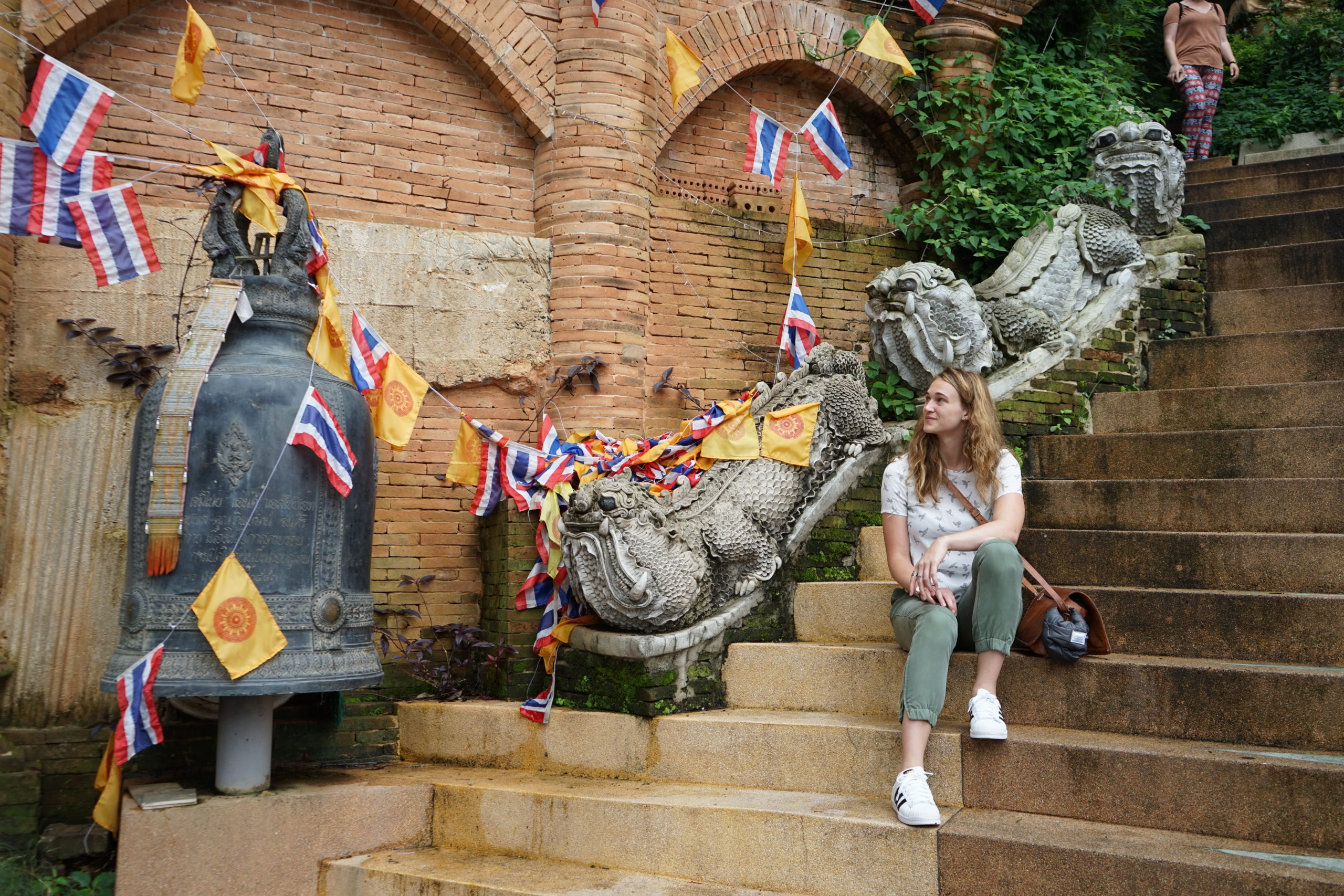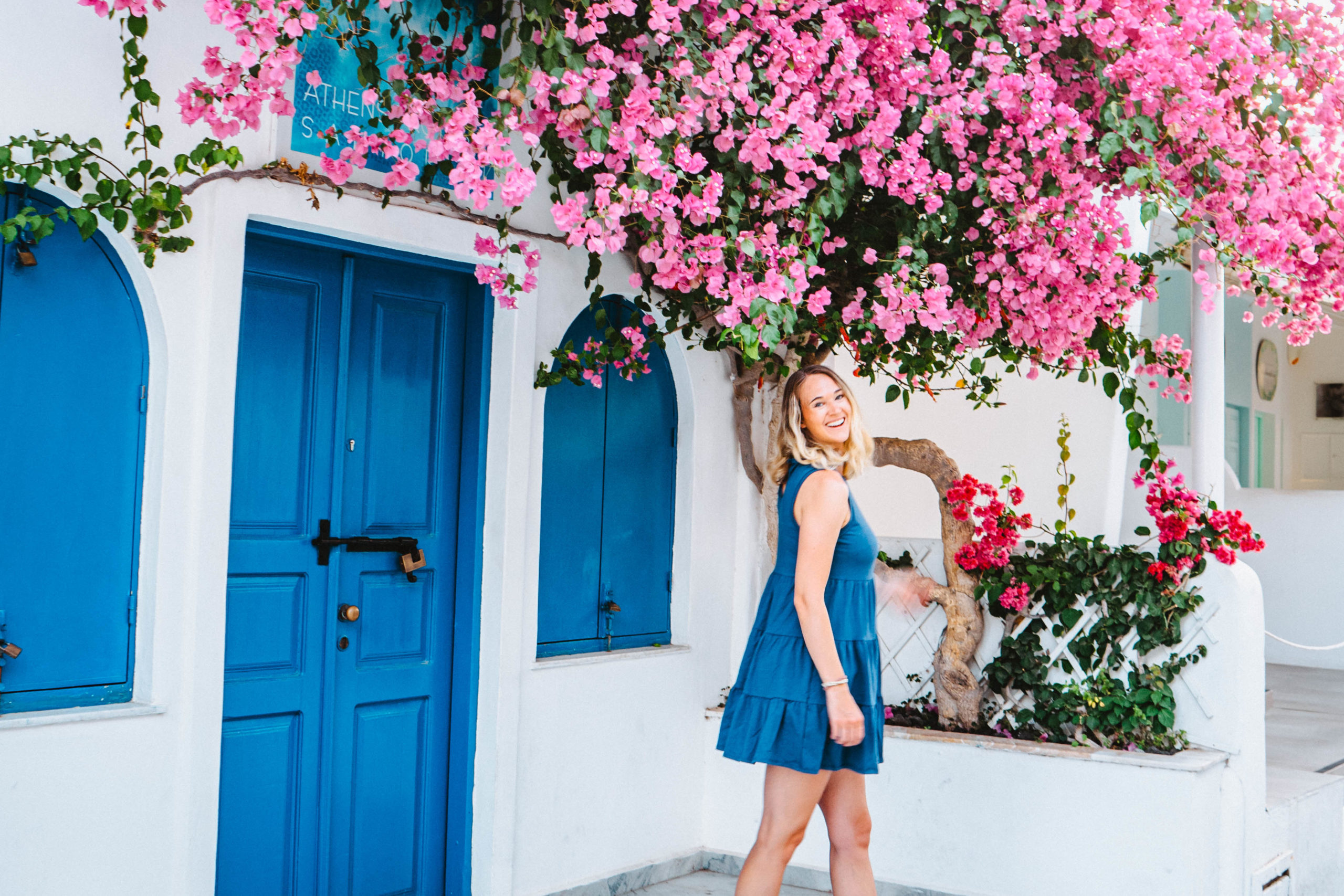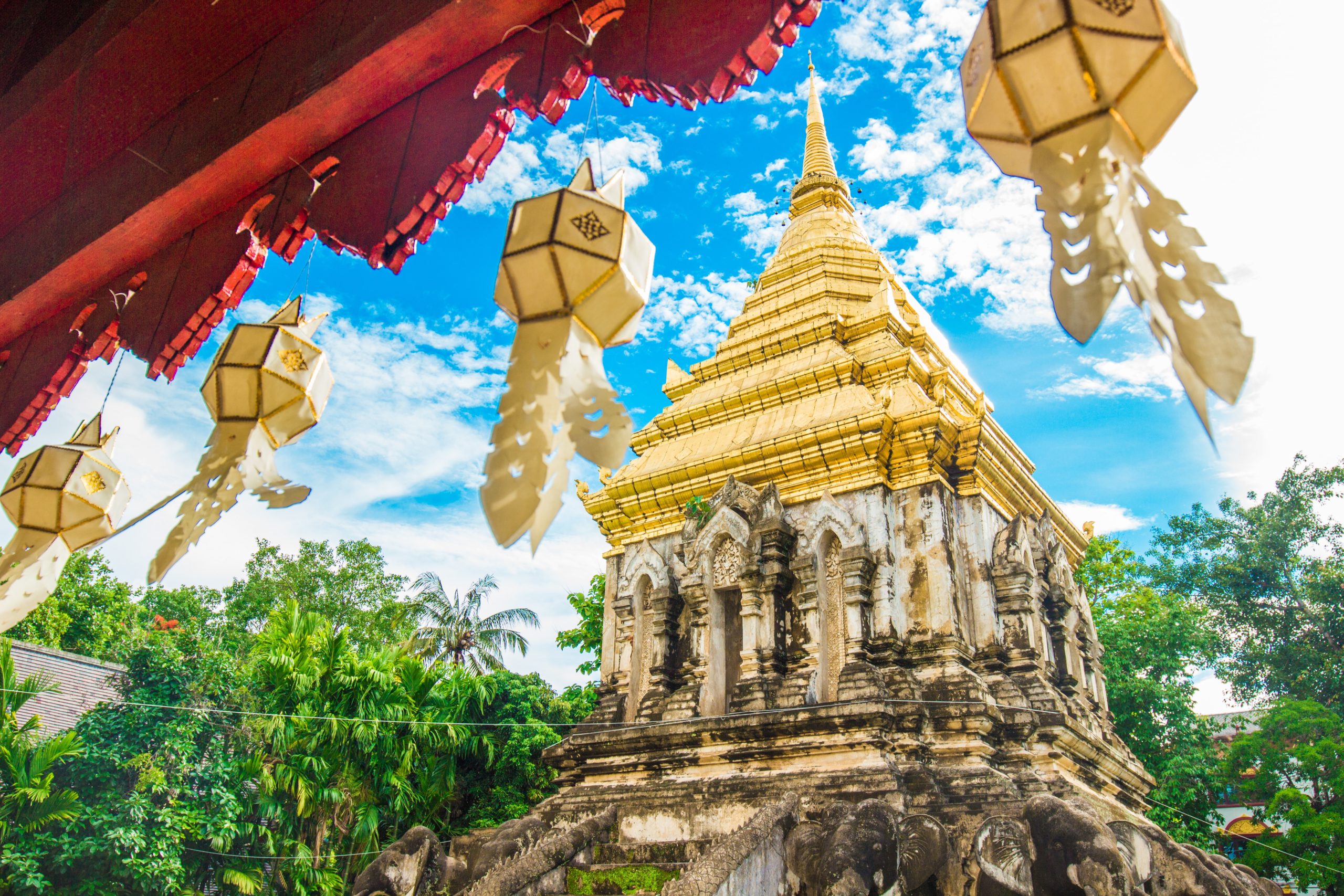learn more
DFY skills courses made specifically for service-based entrepreneurs to learn profitable online skills and master their craft OR to train their team to be the best
Podcast
Travel
Success Stories
Systems & Productivity
Mindset
Marketing
Starting a Business
Personal Dev
categories
learn more
Signature group program for DFY services providers and coaches, to build 6-figure foundations and scale to consistent $5k months.
learn more
A binge-worthy, no BS podcast for female entrepreneurs
3
2
1
top posts
check it out
Whether you are just starting out or scaling to 7-figures, we have a variety of masterclasses, templates & more for FREE to help you grow!
snag some of our free resources
freebies
7-figure business coach & course creator helping you build a profitable online biz & become OBSESSED with your life. I'm an Enneagram 3 & love ClickUp, color coded calendars & design. I travel around the world full time and spent most my days in Thailand, Vietnam or Bali.
Im Amanda!
Located in the mountains of northern Thailand, Chiang Mai is one of the most popular digital nomad destinations in the world. The incredible food, friendly locals and affordable cost of living make it the perfect place to base yourself for a few months (or years!).
Chiang Mai digital nomads will find plenty of other business owners and freelancers making their way in this city of temples which is always a plus because it’s easy to make friends.
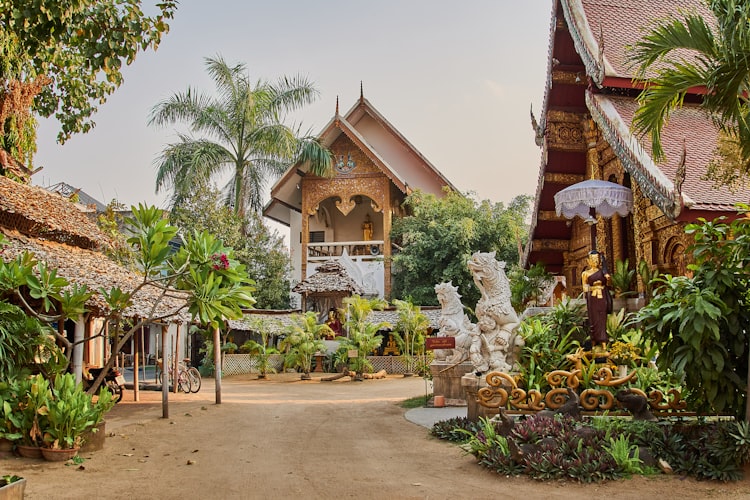
Still wondering how to make this whole digital nomad thing happen? Check out the Laptop Lifestyle Blueprint, your guide to setting up an online business in just 30 days, so you can travel the world full time and build your own freedom lifestyle!
What’s life like as a Chiang Mai digital nomad?
Chiang Mai to this day is one of our favorite places to live because of the small city feel while having access to everything you need (no seriously there is a mall with an American Eagle there). It is also one of our favorite places because of the low cost of living, ample opportunity for weekend adventures, and ability to travel easily via the international airport. You can hop on a plane to Vietnam or Myanmar or the Thai islands and be there in only 1-3 hours.
If you love culture, great food, and an international community–and you don’t mind the heat!–Chiang Mai is the place to be. Let’s dive into the details about living as a digital nomad in Chiang Mai.

Wondering how Chiang Mai stacks up to other digital nomad destinations? Check out our other destination guides below!
- Lisbon Digital Nomad Guide
- Da Nang Digital Nomad Guide
- Canggu Digital Nomad Guide
- Tulum Digital Nomad Guide
- Athens Digital Nomad Guide
Thailand Basics
Language: Thai
Currency: Thai Baht (30 THB = 0.95 USD)
Majority Religion: Buddhism
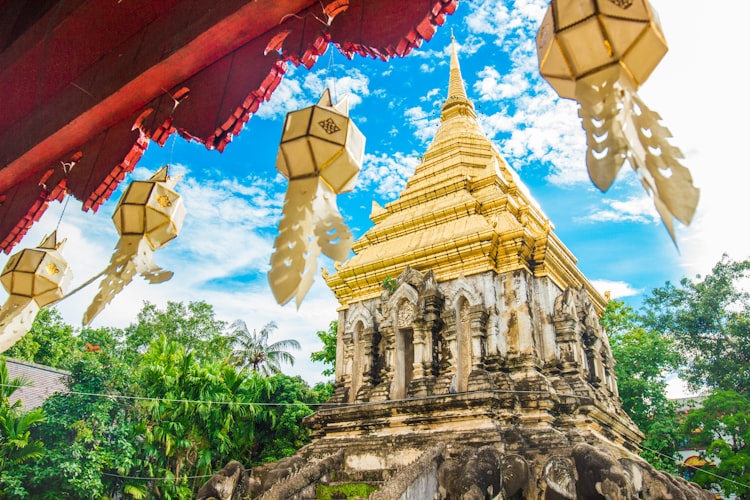
Climate and When to Visit
Peak Season (October-February)
The climate in Chiang Mai is different from Bangkok or the Thai islands. The dry season runs from October-February and is generally cooler, with daytime temperatures in the 80s Farenheit (28-30 Celcius). This is also the peak season and affordable rentals may be harder to find.
Chiang Mai Burning Season (March-May)
From March-May, the temperatures soar to around 105 Fahrenheit (40 Celcius) and the air quality is poor. This season is known as the Burning Season in the north of Thailand, because all the surrounding farmers burn their crops. I would avoid visiting during this time.
The smoke is so thick you can’t see the mountains in the distance, the sky is grey, and you have to wear a mask and stay inside most days because the air quality is so poor. I got a really bad cough from pollution poisoning while in Chiang Mai during this time. The smoke generally clears by spring, but some years it lasts until May or June. Make sure you check the air quality reports before going.
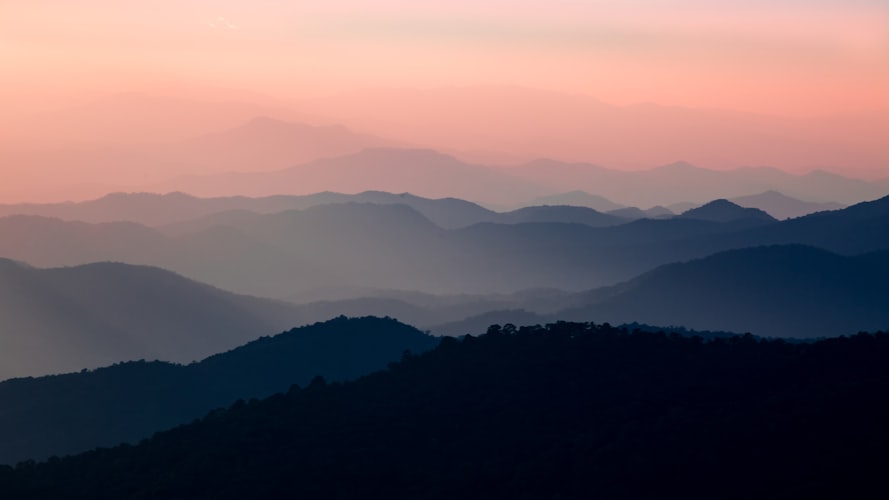
Rainy Season (June-October)
June-October is the rainy season, which offers affordable shoulder season pricing–if you don’t mind getting wet. The rainy season in many Southeast Asian countries is very common but not all rainy seasons are equal. The Chiang Mai rainy season is–in my opinion–not that bad.
If you are coming on vacation, I would aim for the dry season instead, but if you are living here, it’s not so bad. The rainy seasons I have experienced in other places like Vietnam are much worse. In Chiang Mai, it rains almost every day, but usually only for a few hours in the afternoon. As long as you plan some indoor afternoon work sessions, you’ll be fine.
Cost of Living for Chiang Mai Digital Nomads
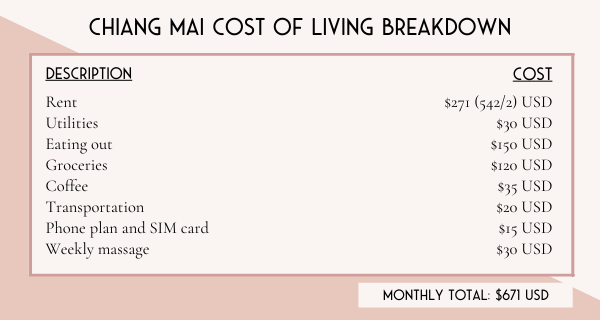
This is what we personally spent, though the amount will vary per person. You can live very comfortably on $650 USD/month or less. We chose to spend extra on weekly Thai massages, which are a (very enjoyable) non-essential. We also spent a fair amount on coffee and occasionally ate out at pricey western style restaurants.
For an in depth breakdown of our monthly expenses, check out the video below or read the blog post here!

Housing
Apartments are in ample supply in Chiang Mai, from basic budget options to luxury highrises. Most Chiang Mai digital nomads can expect to pay between $300-700 USD a month for rent. We went a little over $500 to have a nice place with a gym and lobby to work out of.

Neighbourhoods
Nimman is a trendy area just outside the Old Town city center. The shops, cafes and restaurants make it a popular choice for Chiang Mai digital nomads. This is where we lived, and we loved it!
More foreigners than Thai live here, so it’s not exactly a local feel, but there’s a great expat community. The Maya Mall is also in Nimman, which makes shopping super convenient. The downside is it’s one of the most expensive areas to live in Chiang Mai.
Santiham is a cheaper alternative to Nimman with more of a local feel. It’s located between the Old Town and Nimman. The Old City itself is more of a tourist spot–most Chiang Mai digital nomads live outside the city walls.
How to find housing in Chiang Mai
Do your research before arriving to make the process smoother. You can start by watching our apartment hunting video here which will walk you through the entire process and take you on a tour of some Chiang Mai apartments!

Remember you can negotiate on rent (we negotiated ours down quite a bit) and don’t forget to check the wifi speed. You can also check out Facebook groups such as Chiang Mai Nomad Girls for more suggestions.
Where to Work as a Chiang Mai Digital Nomad
We personally chose to work out of cafes instead of coworking spaces, but both are great options.
Coworking spaces
Punspace
Punspace is a popular coworking space with two convenient locations in the old city. They serve coffee on site and are open 24/7, so this might be a good option if you keep irregular working hours!
hub53
Hub53 is another great working spot for Chiang Mai digital nomads. Their rates start at 189 THB ($6 USD) daily, and include free snacks, massage chairs and a nap room (!!).
Cafes
Considering that Chiang Mai is a digital nomad hotspot, we were surprised by the lack of workable cafes. Save time on your search and check out some of our favs:
Wakeup Cafe
Wakeup Cafe is a common place for students at the nearby university to come and study, so you’ll have plenty of company while working here. They have lots of outlets and an upstairs and downstairs area with both booths and tables.
The good thing about Wakeup Cafe is that it is open 24/7 so if you have some last minute projects or maybe are just a night owl, this will be your go to spot.
Note: The coffee and food is nothing to write home about but you have to buy something to work there.
Roastnayum
This coffee shop is small and always packed with people working so make sure to get there early to get a spot. There are plugs, but not an overwhelming amount so make sure your computer is charged as well.
Try the Thai iced coffee for just 55 THB!

CAMP (Maya Mall)
CAMP is a coworking space in the mall. It has tons of seating options from tables to booths to bean bags to an outdoor patio. The room also has tons of windows which makes for a nice bright work environment, however the reason we rarely worked here is because CAMP charges by the hour for wifi use (which isn’t uncommon in Thailand). Not to mention their drinks were very average so you are simply paying for the work environment.
Overall Tip: If you don’t plan on getting a coworking pass somewhere, make sure you can work comfortably from your apartment. And stay flexible. Cafes are available, but more limited than you might be used to if you’ve ever worked from Bali. With that said, lots of people make it work, and Chiang Mai is still a great digital nomad destination.
Internet and SIM Cards
If you’ve unlocked your phone, you can purchase a Thai SIM card at the airport or in the city. The two major companies are TrueMove and AIS. We paid $15 USD/month for unlimited data with TrueMove. I’ve heard many positive things about AIS as well so I don’t think you can go wrong with either option.
In general, wifi in Thailand is great – some of the best actually. We rarely ever had problems with our phone data, home wifi, or public wifis as far as speeds and connectivity. Other places like Bali are known for having terrible wifi when you aren’t in coworking spaces, but luckily in Thailand that is not the case.
Transportation
We didn’t rent scooters in Chiang Mai, because the cops in Chiang Mai are rather strict about stopping traffic and checking for drivers permits. If you don’t have an international drivers license for motorcycles they will ticket you. In many other countries the cops don’t care as much, but especially driving around the main square of Old Town, there are cop checks everywhere.
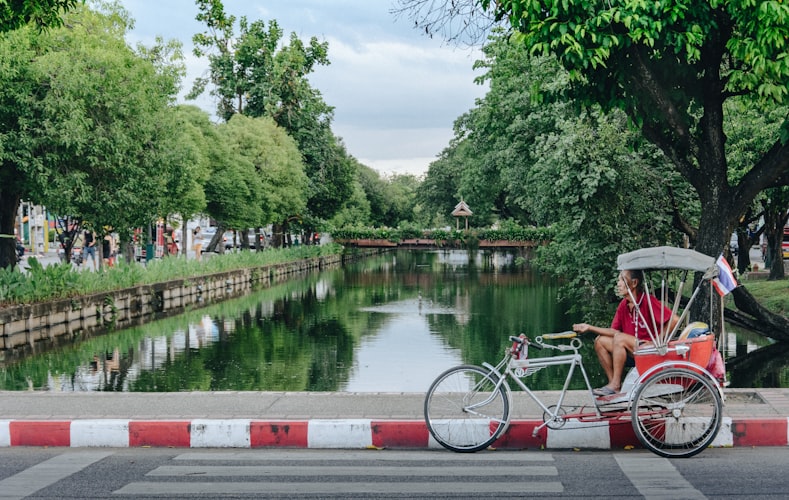
The cheapest and easiest way to get around is by songthaew–the famous Chiang Mai red trucks. These are shared taxis that will take you almost anywhere for 30 THB (less than $1 USD). They’re super convenient and easy to find all over the city. We spent about $20 USD monthly on transportation. Additionally you can use Grab (a car pick up company like Uber). Plus Nimman is super walkable.
Tip: Don’t ask how much a Songthaew ride costs–only inexperienced tourists do this. The price is always the same, unless you’re going an extra long distance, in which case the driver will ask for more.
Taxis are generally safe to use in Thailand and we do use them fairly often as well. Only use taxis that turn on their meter. Don’t ask for the price or try to negotiate a fixed price. Insist on them using the meter or else just wait for another taxi.
Food
Eating Out
One of the best parts about living in Thailand is the amazingggg food. Not only that, but it’s super cheap! Most meals cost less than $2.50 USD. We ate out three meals a day at restaurants and small food stalls for $250 USD/month. If you choose to eat at western style restaurants, your budget will be higher.
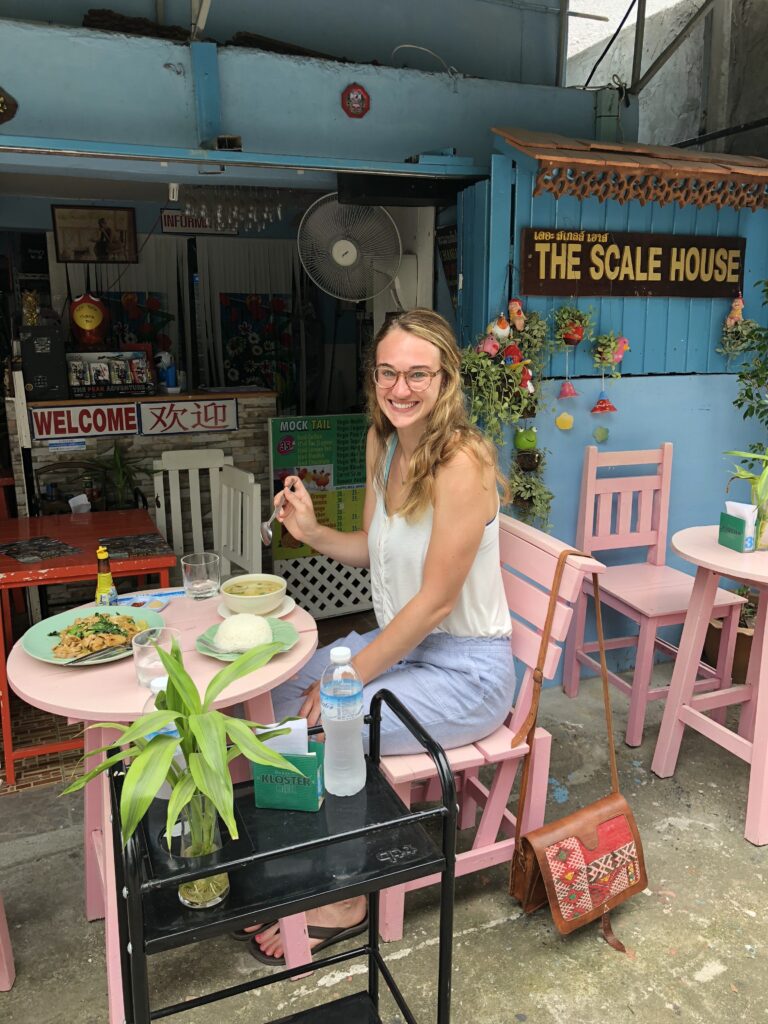
Most of the best places you’ll find will be local food stalls and tiny hole in the wall places. Go exploring and see what you find! There are plenty of vegetarian and vegan options as well.

My favorite western spots are:
Rustic and Blue
Vegan, gluten free, farm to table–think SoCal vibes!
Salsa Kitchen
It can be hard to find good Mexican food outside of the Americas, but this place nails it! It helps that the owner was originally from Houston Texas.
Groceries
You likely won’t cook much in Chiang Mai (although if that’s your thing, there are some fantastic cooking classes!), but you’ll probably still buy some snacks now and then. You’ll also need to buy bottled water, as the tap water in Thailand is not drinkable.
In Chiang Mai, there is a big grocery store in Maya Mall near Nimman called Rimping. This is where we would buy all our groceries. (They even had gluten free goods!)
Tip: Buy extra large water jugs and refill at water filling stations. Not only is this better for the environment, but it’s cheaper than buying small plastic bottles over and over again.
7/11 is the main convenience store in Thailand–there’s one on every corner–and you can also buy water here. In total, we spent about $80-100 USD a month on groceries and bottled water.
Coffee
This could be an extra or an essential, depending on how much of a coffee lover you are. We personally bought at least one coffee a day, almost seven days a week, for a total cost of $35 USD a month. A classic Thai coffee is about 30-50 THB ($1.00-1.50 USD) at a local stand or coffee shop.

There are also a few specialty coffee shops such as Ristr8o (pictured above) and Roxpresso.
Gyms in Chiang Mai
We spent a little extra to rent an apartment with a gym, but if your building doesn’t have one there are still lots of options. The gym in the top level of Maya Mall–Maxx Professional Fitness–is popular with Chiang Mai digital nomads and cost about $30 USD a month.
To mix up our workouts, we also joined a Muay Thai gym. This is a bit of a pricier option, but super fun if you can afford it! We joined the Chiang Mai Muay Thai Gym right downtown, where classes cost 300 THB ($9.50 USD).
Things to Do in Chiang Mai
Old Town Temples
The Old Town is perfect for exploring on foot, and is often called “Temple City”, because there are so many of them.
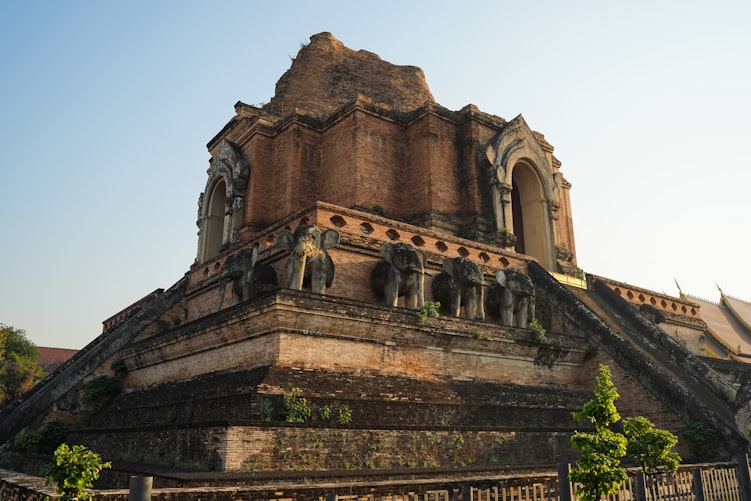
Sunday Night Market
There are markets happening virtually every day of the week in Chiang Mai, but the biggest and most spectacular is the Sunday Night Market. It runs from 4 to 10pm every Sunday, taking up almost the entire Old Town. You can buy everything from souvenirs to clothes to fried tarantula. Expect a crowd!

Wat Doi Suthep Temple
This Insta-famous mountain temple is one of the top things to do in Chiang Mai. Located 45 minutes outside the city center, it’s easy to hire a songthaew to take you there. It’s up to you whether the views are worth the 306 steps to the top!
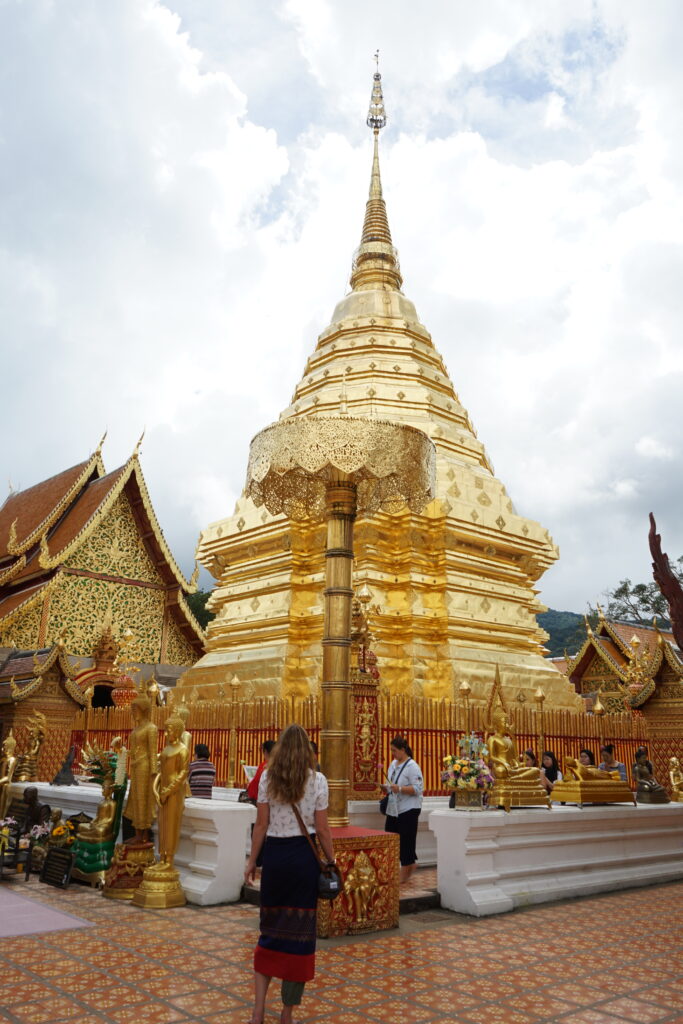
Songkran
If you’re in Chiang Mai in the spring, don’t miss Songkran (Thai New Year). Known to foreigners as the biggest water fight in the world, this 3 day event celebrates the beginning of a new solar year with religious ceremonies–and yes, a water fight. Splashing water is meant to wash away sin and bad luck going into the new year.
The biggest parties occur around the Tha Phae Gate, the Old Town moat and along the Ping River. Pick up a super soaker from 7/11 and join the fun! And remember to dress appropriately (ie. not in your bathing suit), as this is still a religious holiday.
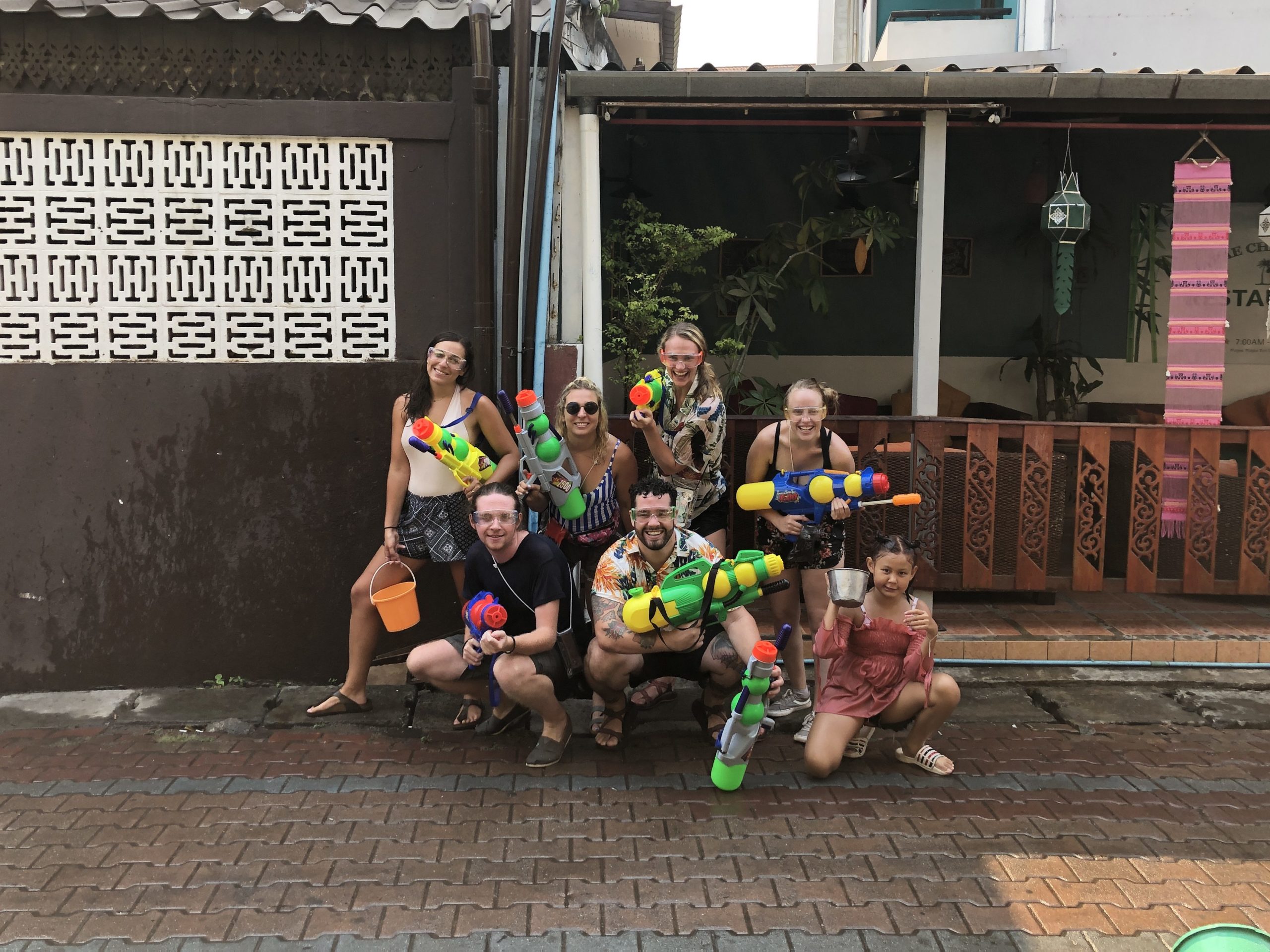
Related Post: Top 12 Things to do in Chiang Mai, Thailand
Day Trips from Chiang Mai
Elephant Nature Park
One of the top things to do in Chiang Mai is visit the elephants. Unfortunately, not all elephant parks are created equal. There are many, many companies offering elephants rides and other unethical day trips to tourists.
I strongly recommend the Elephant Nature Park, which is very well known and one of the only truly ethical elephant sanctuaries in Thailand. They have lots of great options for every price range, from half days to overnight trips. Getting up close and personal with these majestic creatures is a once in a lifetime experience, and I can’t recommend it enough!
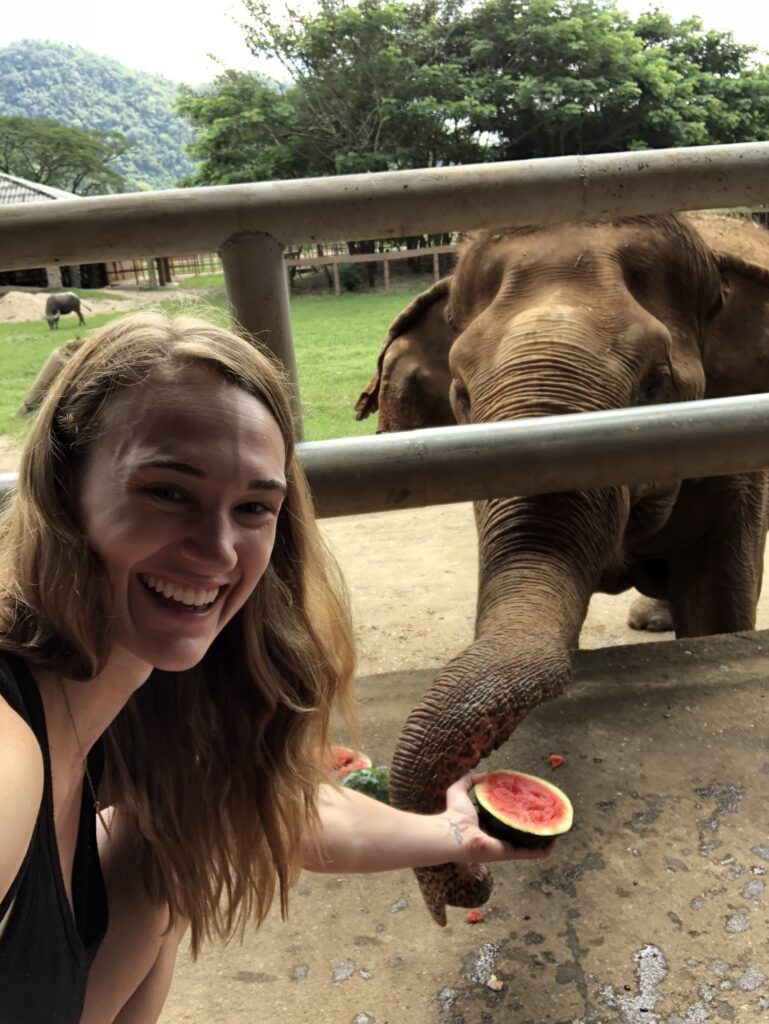
Eakachai Floating Houses
These floating bungalows, located on a tranquil lake outside Chiang Mai, are the perfect escape from the city. You can drop in for a meal at the restaurant or stay overnight in one of the bungalows. It is a bit of a drive out there and to be honest this is more of a local spot, so you won’t see many tourists there.
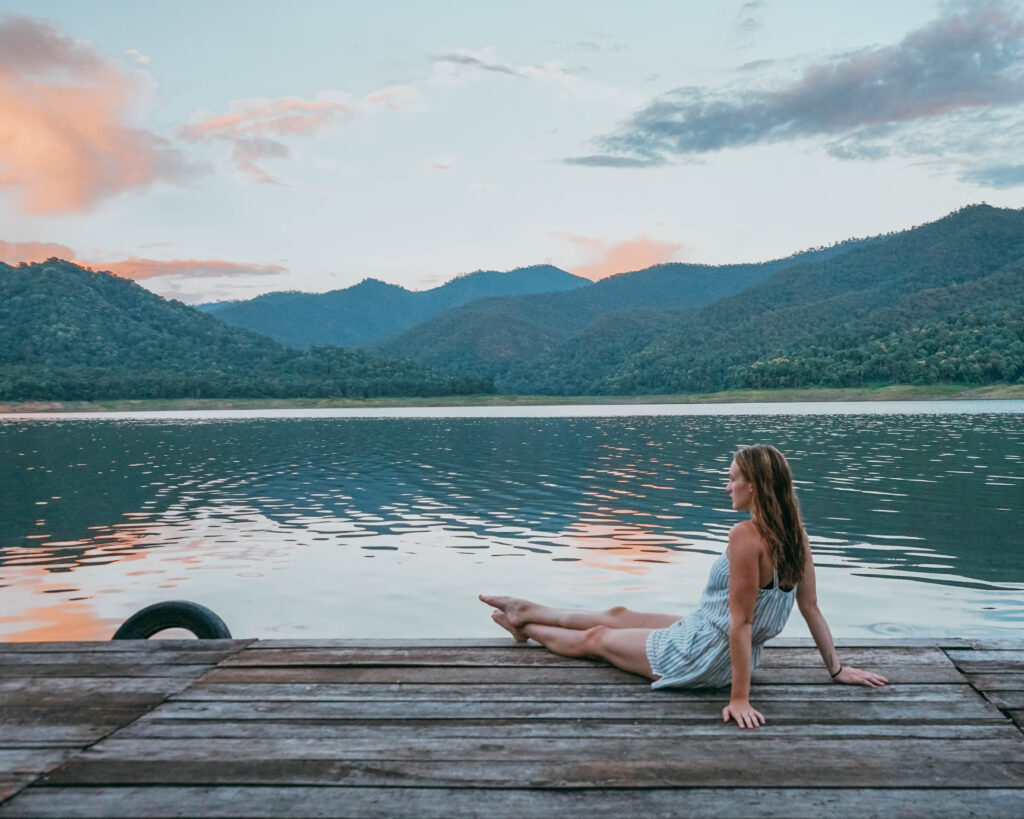
Doi Inthanon National Park
Just 1 hour from the city, this National Park offers stunning views of the mountains and the Royal Chedis (built to celebrate the king and queen’s 60th birthdays). It’s also the highest spot in Thailand and a great place to escape the heat!

Chiang Rai
Located a few hours north of Chiang Mai, this smaller city is a popular getaway for Chiang Mai digital nomads. Most people visit to see the famous White Temple and Blue Temple. You can take a bus, rent a scooter, or travel with one of the many tour companies offering day trips.
Tip: My personal recommendation is NOT to take an organized day trip there. This is what we did and we barely had any time at each location. I would recommend staying in Chaing Rai for 2-3 days and making sure to get to all the temples very early to avoid the hordes of tourists.
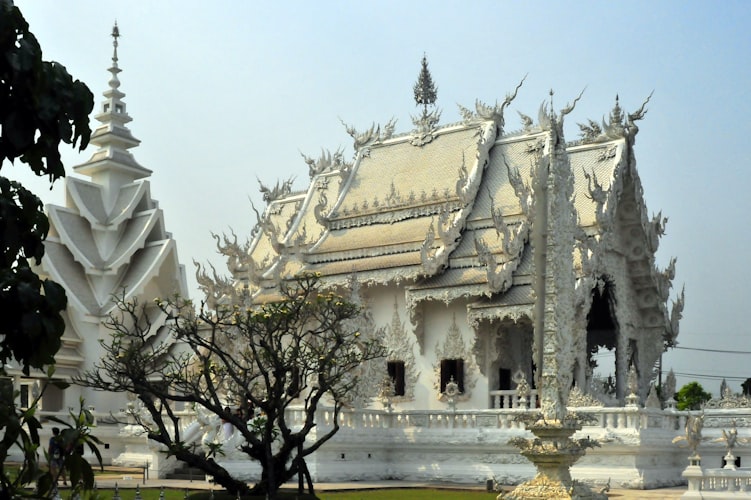
Pai
Hugely popular with Chiang Mai digital nomads and backpackers from around the world, Pai is a laidback hippy town in the northern Thai mountains. It makes for a great weekend getaway, but some people stay for months and never leave!
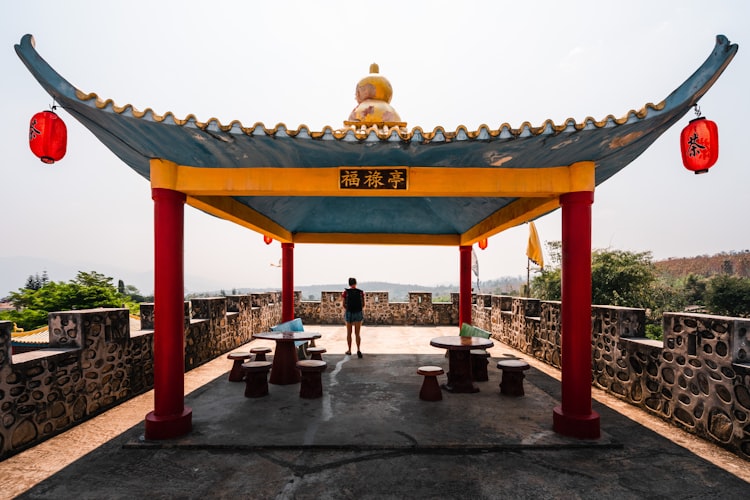
Entertainment and Extras
These are all the extras we personally spent money on (not included in the cost of living estimate). Any of these could be reduced or eliminated to cut expenses, but these estimates should give you a better idea for your own budget:
Massage
If you’ve never had one before, let me tell you: Thai massages are an experience. We absolutely love them, and they’re also super cheap ($6-9 USD for an hour). Weekly massages are a great luxury that most people would never spend the money on at home (we spent $30 USD monthly).
Hair Care
Haircuts are also cheaper than in the states: a men’s haircut or beard trim is about $3 USD and a regular women’s cut is about $15 USD. I also paid about $150 USD for a keratin treatment, which normally cost $500+ USD back home!
Travel
There are so many things to see in and around Chiang Mai that we mostly travelled locally. Each month, we spent about $200 USD on travel, including accommodation, transportation and tour fees.

Entertainment
A popular night out for Chiang Mai digital nomads might be to go to the night market (which is technically free) or go see a movie at Maya Mall. For two people, seeing a movie cost about 250 THB ($8 USD).
Vitamins
Of course not everyone takes vitamins while traveling, but if you do (or are curious how much vitamins cost in Thailand), we spent about $25-30 USD a month.
Travel Insurance
We didn’t include this in the cost of living estimate because the prices vary so much based on your visa. For us, we’re always on tourist visas and use World Nomads insurance.
Visa
Thailand visas are issued for 30 days on arrival, but if you want to stay longer you have to apply for a 60 day tourist visa BEFORE leaving your home country (it can take weeks at the US embassy). Once you have that, you can visit the embassy to extend your visa for another 30 days, to a max total of 90 days.
You can’t stay in Thailand for longer than 90 days unless you have a work or study visa. Many Chiang Mai digital nomads make “visa runs” across the border to Myanmar, Cambodia or Laos, at which point they re-enter Thailand on a new tourist visa.
Health and Safety
Chiang Mai is generally very safe–aside from its thriving digital nomad scene, it’s also a popular spot for retirees and solo female travelers. As always, make sure your vaccinations are up to date and you have travel insurance. Check air quality reports before traveling.
One of the biggest dangers to foreigners is traffic accidents. Only rent a scooter if you know what you’re doing, and WEAR YOUR HELMET!
Finally, don’t forget to purchase health insurance. We use Safety Wing, one of the leading providers for digital nomads, and I highly recommend them!
Ready to become a Chiang Mai digital nomad?
As one of the most iconic digital nomad cities in the world, Chiang Mai is definitely worth a visit. The food alone is worth the trip!
If you’re ready to get serious about becoming an entrepreneur and digital nomad, check out Laptop Lifestyle Bootcamp–my signature group coaching program that will take you from dreaming to doing. Get your business up and running faster, with group coaching, expert guest coaches, and a community of like-minded women all building their own freedom lifestyle!
If it’s community you’re after, join us over on Facebook, where we talk all things business, life and travel. Come say hi!
Keep Reading:
How to manage your business while traveling full-time
10 takeaways from Visiting the States after 1.5 years living in Asia
How to Quit Your 9 to 5 and Travel the World Full Time
Like this post? Pin it!
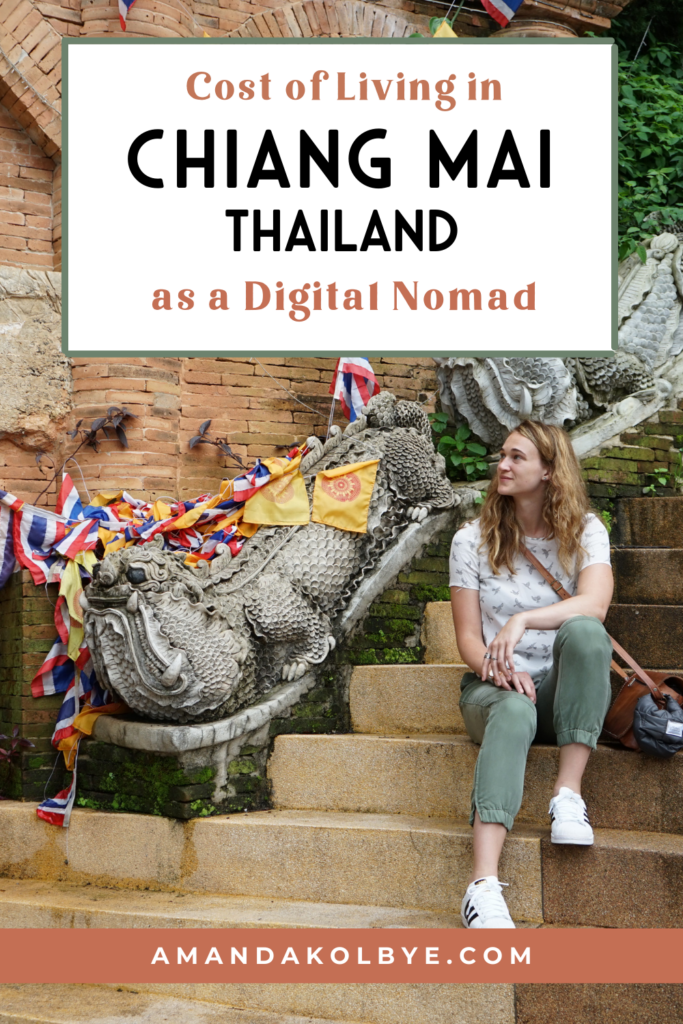


check out the latest
take quiz now
For the coach or DFY service provider ready to sell out their services, stand out from the crowd, & hit $100k. It's time to stop winging it & shouting to a void. Take the quiz to diagnose your offer gaps and get instant results & action steps to fix it!
discover what's preventing your offer from standing out & selling out
offer oversight quiz
Take the Quiz
the freebies
download
how to start your online business
calculator to replace your 9-5 salary
SPREADSHEET
mini course
starting your biz
coming soon
breakthrough: scaling to multi-6 figures
private podcast
scaling calculator
spreadsheet
scaling
coming soon
full of exclusive content from Amanda, industry updates and resources, and short digestible content to give your week a major power up!
join the weekly newsletter
programs
courses
Something tells me you belong here and desire something more.
hi, i'm Amanda
Three years ago, I chose to quit my corporate 9-to-5, sold all my belongings, and booked a one-way ticket to Thailand. I had no real plan—just a burning desire to see the world and a bone-deep certainty that there was more to life than my mind-numbing day job.
Since then I have started multiple business ventures including LLCo. which has scaled to over $1 million dollars in 2 years, and has helped hundreds of women from all over the world build profitable online businesses, defy expectations, and create a freedom lifestyle on their terms—no one else’s.
Every day you get to choose again as to how you will live your life - and every defining moment will come down to just that, a choice.
Here’s the thing - your past story, knowledge, and experiences may have shaped you to be where you are now, but they don’t have to define where you go next.
Hey there, I’m Amanda Kolbye. I’m on a mission to help female entrepreneurs acquire business tools & knowledge so they can create generational wealth and a life where you never think “is this it?” In our world, women become unstoppable. In our world, limitless is the only boundary we adhere to.
7-figure international business coach, online educator, and founder of Laptop Lifestyle Co.
The woman behind the mission
let's hang on insta
Brand and Website Design by Current Design Studio
retreats & events
success stories
courses
skills mastery academy
laptop lifestyle bootcamp
shop
work with us
student login
contact
blog
podcast
free resources
about
explore
sign up
newsletter
sign up for the
hire from our directory
become an affiliate
newsletter
